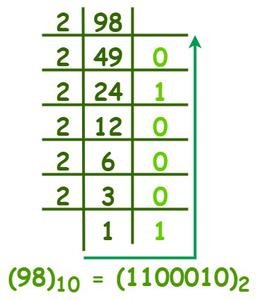
Binary system, in mathematics, positional numeral system employing 2 as the base and so requiring only two different symbols for its digits, 0 and 1, instead of the usual 10 different symbols needed in the decimal system.
Solving binary problems involves breaking down complex problems into simpler steps that can be represented using binary code.
Here are some steps you can follow to solve binary problems:
- Understand the problem: Before you can solve a binary problem, you need to understand what the problem is asking. This involves reading the problem carefully, identifying key information, and determining what the problem is asking you to find or solve.
- Convert the problem into binary code: Once you understand the problem, you need to convert it into binary code. This involves breaking down the problem into its component parts and representing each part using binary digits (0 or 1).
- Perform binary operations: After converting the problem into binary code, you need to perform the necessary binary operations to solve the problem. This may involve performing logical operations (AND, OR, NOT), arithmetic operations (addition, subtraction, multiplication, division), or bit manipulation operations (shifting, rotating, masking).
- Check your solution: After performing the necessary operations, you need to check your solution to make sure it is correct. This involves verifying that your binary code represents the correct answer to the problem.
Some tips to help you solve more effectively include:
- Practice converting decimal numbers to binary and binary numbers to decimal. This will help you become more comfortable with binary notation and make it easier to solve binary problems.
- Use truth tables to help you visualize logical operations. Truth tables show all possible inputs and outputs for a given logical operation, making it easier to understand how the operation works.
- Break down complex problems into simpler steps. This will help you avoid mistakes and make it easier to solve the problem using binary notation.
- Use online resources and tutorials to learn more about binary notation and how to solve binary problems. There are many resources available online that can help you improve your binary problem-solving skills.
In conclusion, solving binary problems involves breaking down complex problems into simpler steps that can be represented using binary notation. By following the steps outlined above and practicing your binary problem-solving skills, you can become more comfortable with binary notation and improve your ability to solve them.
